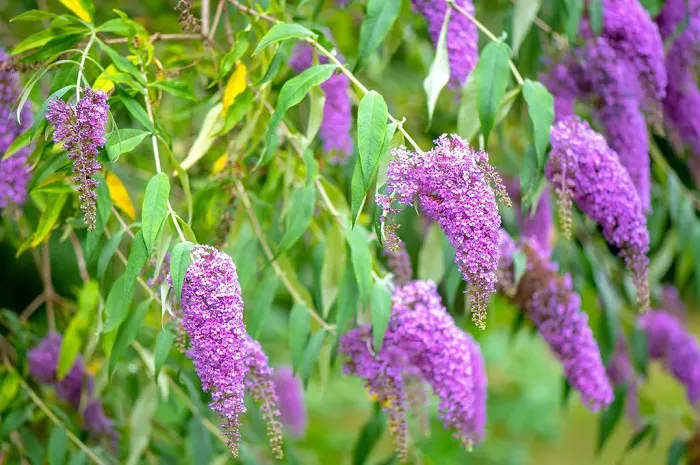While the buddleia plant, commonly known as the “butterfly bush,” adds a splash of purple to UK gardens, it is increasingly being recognized as a potential threat to properties. Experts warn that this plant can cause significant damage to buildings, with some even comparing its threat level to that of the notorious Japanese knotweed.
Environmental Controls, a company specializing in the removal of invasive weeds, has issued a warning to homeowners about the often underestimated dangers of buddleia. Despite its attractive blooms, the plant is known for exploiting weaknesses in structures, such as cracks and fragile mortar, similar to Japanese knotweed. However, unlike knotweed, buddleia has a shallow root system and is less likely to damage underground infrastructure.
“Buddleia and knotweed can both cause significant damage to building structures,” said Jennifer Holmes, a spokesperson for Environmental Controls. “Buddleia is highly invasive and difficult to eradicate, and it can grow in hard-to-reach areas such as roofs, gutters, window sills, and walls. In fact, it can grow anywhere a seed lands.”
Holmes emphasized that buddleia’s rapid growth, reaching heights of up to 15 feet, should be a significant concern for property owners. Despite these warnings, buddleia is not listed on Schedule 9 of the Wildlife and Countryside Act 1981, meaning UK residents are still free to plant it in their gardens.
Experts are urging homeowners to be vigilant, especially if buddleia is not a controlled garden plant. It can easily sprout from neglected corners of roofs and walls and flourish unnoticed. Early detection and eradication are crucial to prevent it from taking root.
In contrast, Japanese knotweed is subject to strict legal controls due to its invasive nature and potential to cause property damage. Under the Wildlife and Countryside Act, it is an offense to plant or cause Japanese knotweed to grow in the wild. Property owners are legally required to prevent its spread to neighboring properties. Additionally, Japanese knotweed is classified as controlled waste under the Environmental Protection Act 1990, and its disposal must follow specific regulations to prevent environmental contamination.
The presence of Japanese knotweed can also impact property sales and mortgage approvals. Sellers are required to disclose its presence, and failure to do so can lead to legal consequences. Effective management of Japanese knotweed often requires professional treatment over several years. DIY removal is discouraged due to the plant’s resilience and the risk of spreading.
Homeowners are advised to remain vigilant and take proactive measures to control the spread of invasive plants like buddleia and Japanese knotweed to protect their properties and the environment.


